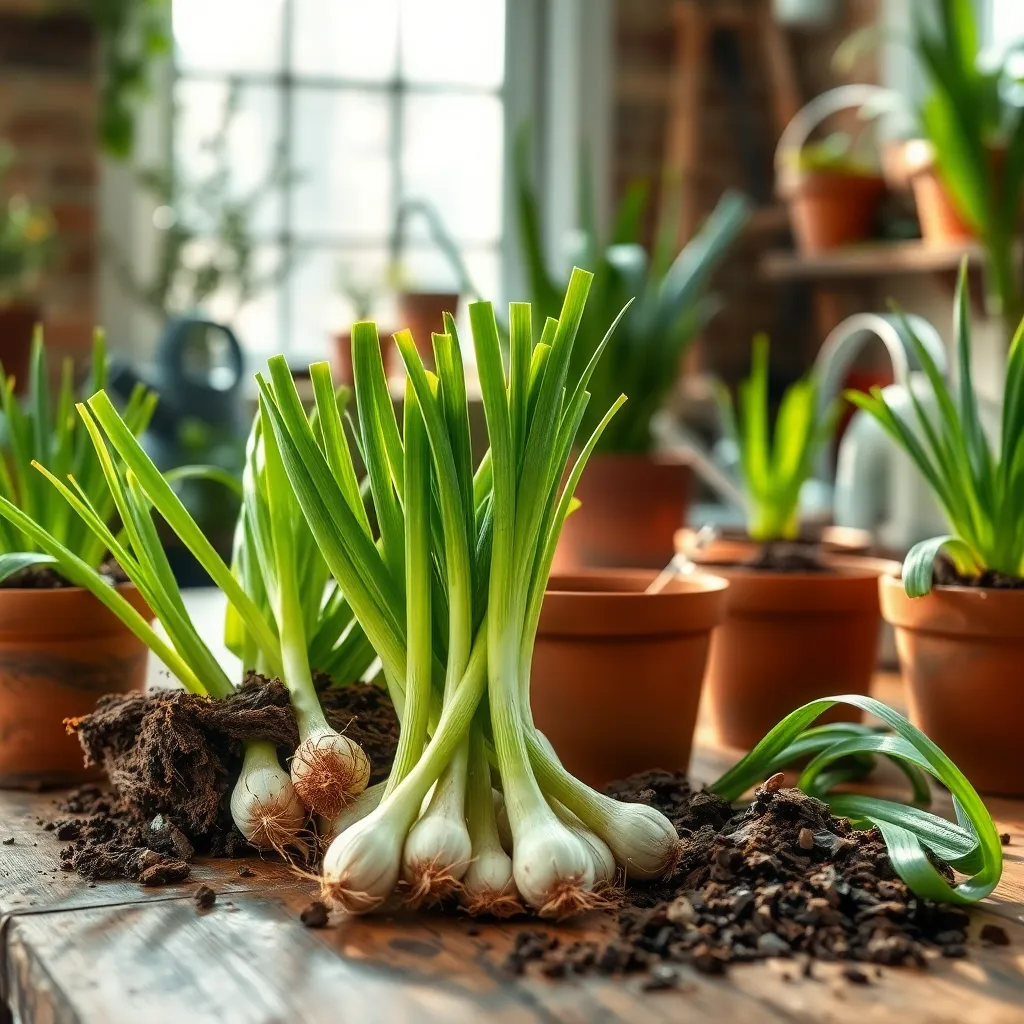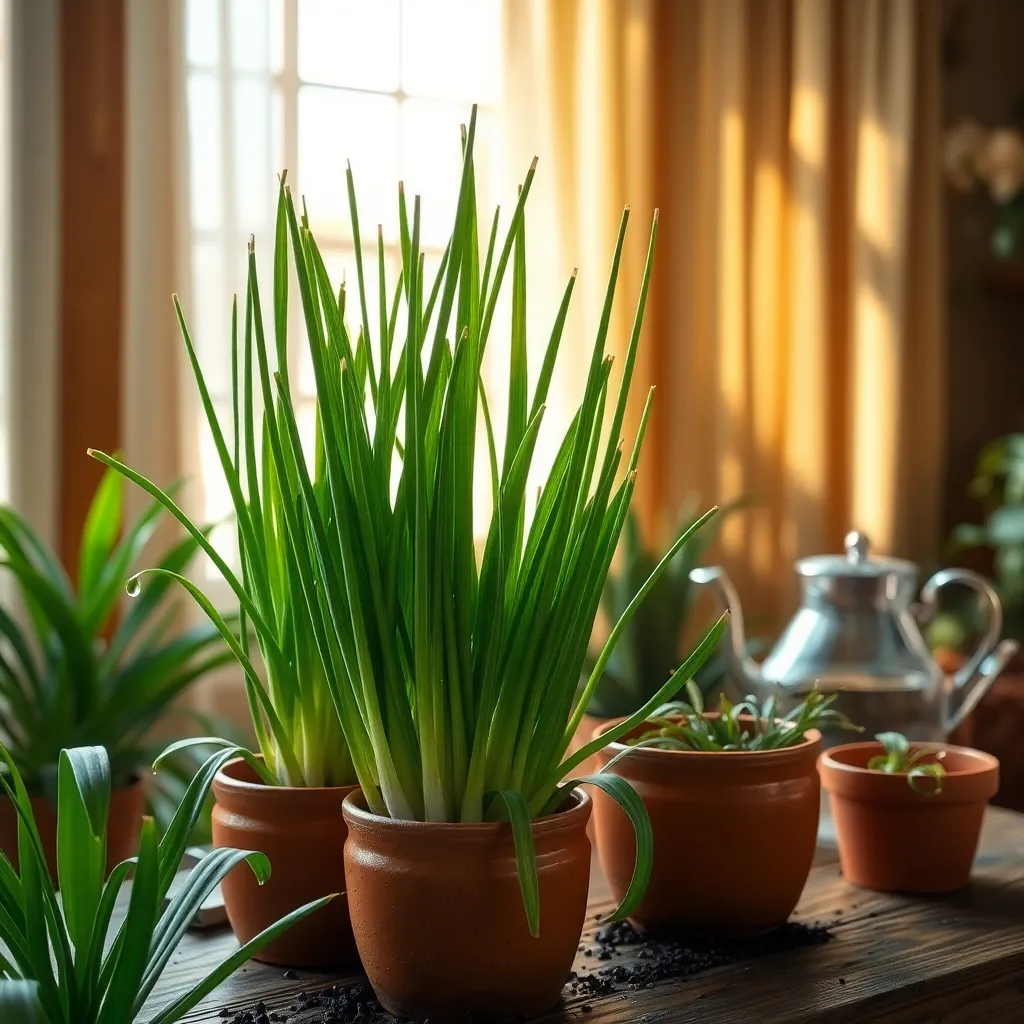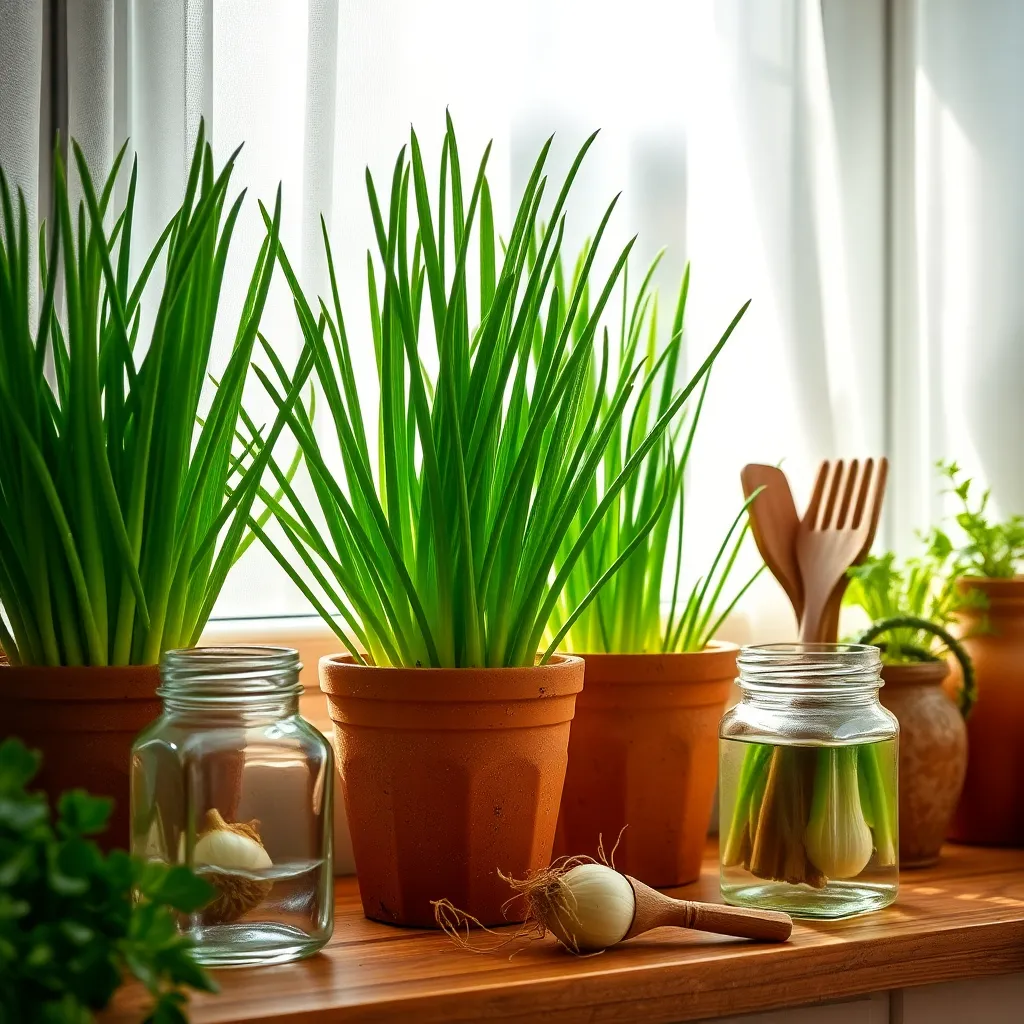Imagine having the fresh, crisp flavor of green onions at your fingertips, ready to elevate any dish with their subtle yet delightful bite. Growing green onions indoors is not just a practical endeavor but a rewarding journey that invites a touch of nature into your home, regardless of your gardening experience. Whether you’re a curious beginner eager to start your indoor gardening adventure or a seasoned green thumb looking to expand your indoor crop selection, cultivating green onions provides a fruitful and manageable project.
In this article, you’ll discover how to transform a simple windowsill into a thriving mini-garden filled with vibrant green onions. We’ll guide you through selecting the right containers, understanding the ideal growing conditions, and harvesting with confidence. By the time you reach the end, you’ll be equipped with all the knowledge you need to nurture these versatile plants and enjoy their fresh taste year-round. Get ready to embrace the joy of indoor gardening and watch your green onions flourish, knowing you’re just a few steps away from a sustainable and satisfying harvest.
Select Healthy Green Onion Bulbs

When selecting green onion bulbs, look for those that are firm to the touch and free from any signs of mold or decay. Avoid bulbs with soft spots or discoloration, as these are indications of poor health and reduced viability.
Choose bulbs that have a crisp, white base and vibrant green tops, if still attached. This ensures they are fresh and ready to thrive once planted indoors.
For best results, opt for bulbs that are similar in size, ensuring uniform growth and making care more consistent. Smaller bulbs tend to establish faster, while larger ones might take longer but can produce more substantial yields.
Advanced gardeners might consider experimenting with heirloom or organic bulbs for a unique flavor and growing experience. These can often be found at local farmers’ markets or specialized gardening stores, providing an opportunity to grow something a bit different.
Once your bulbs are selected, prepare them for planting by gently peeling away any loose outer layers. This simple step helps prevent rot and ensures the bulb can absorb water and nutrients effectively.
Prepare a Suitable Container

Choosing the right container is crucial for successfully growing green onions indoors. The container should be at least 6 inches deep to accommodate root growth, ensuring your onions have ample space to thrive.
Consider using a pot with drainage holes to prevent water from accumulating at the bottom, which can lead to root rot. If your chosen container lacks drainage, you can add a layer of pebbles or small stones at the bottom to enhance drainage.
Select a container made from materials like clay, ceramic, or plastic, as these can effectively retain moisture while allowing some air circulation. Ensure the container is large enough to plant multiple bulbs, spacing them about 1 to 2 inches apart for optimal growth.
Pro tip: Use a high-quality potting mix that is well-draining yet retains enough moisture for green onions. Mix in some organic compost or slow-release fertilizer to provide essential nutrients throughout the growing period, promoting healthy and robust onion growth.
Plant Bulbs with Correct Spacing

When planting green onion bulbs indoors, ensuring proper spacing is crucial for healthy growth. Aim to place each bulb about one to two inches apart in your container to allow ample room for root and leaf development.
Spacing bulbs correctly helps prevent overcrowding, which can lead to pest issues and poor air circulation. Overcrowded plants may compete for nutrients and water, so maintaining the recommended distance helps each bulb thrive.
For beginners, using a ruler or a small stick marked with the appropriate spacing can be a handy tool to achieve uniform planting. More experienced gardeners might find that aligning the bulbs in a grid pattern helps maximize space in any container size.
In addition to spacing, consider the depth at which you plant the bulbs. Plant them with just the tips of the bulbs exposed above the soil to encourage faster sprouting and robust growth. This method ensures that the bulbs receive adequate light and warmth, which are essential for indoor cultivation.
Provide Adequate Light and Water

To ensure your green onions thrive indoors, providing adequate light is crucial. Place your pots on a sunny windowsill that receives at least six hours of direct sunlight each day for optimal growth.
If natural light is insufficient, consider using grow lights to supplement the lighting needs of your green onions. Position the grow lights about 6 inches above the plants and keep them on for 12 to 16 hours daily to mimic natural sunlight.
Watering your green onions correctly is just as important as providing light. Keep the soil consistently moist but not waterlogged by watering thoroughly when the top inch of soil feels dry to the touch.
For best results, use a pot with drainage holes to prevent excess water from accumulating and causing root rot. A well-draining soil mix, such as a combination of potting soil and perlite, will further ensure proper moisture balance.
Remember, overwatering is a common mistake with indoor plants, so it’s essential to monitor the moisture levels regularly. Employing a simple finger test or a moisture meter can help you maintain the right moisture balance, especially for those new to gardening.
Harvest and Regrow Continuously

Green onions are one of the easiest plants to harvest and regrow, making them perfect for a continuous indoor gardening project. Once you’ve snipped the green tops for use in your kitchen, leave about an inch of the white base intact.
Simply place the white bases in a glass of water, ensuring the roots are submerged, and watch them regrow within days. Change the water every few days to keep it fresh and prevent any unpleasant odors.
For a more sustainable approach, you can plant the white bases in a pot with soil once they’ve developed new roots. Use a well-draining potting mix, such as one containing equal parts peat moss, perlite, and vermiculite, to provide the best environment for growth.
To maximize your harvest, ensure your green onions receive consistent light, ideally from a south-facing window or under a grow light. If you’re using a grow light, aim for about 12 to 14 hours of light per day to mimic the conditions of the growing season.
Advanced gardeners might try experimenting with different container sizes to see how it affects growth. A larger pot can allow for multiple onion bases to thrive, providing a more bountiful harvest.
Conclusion: Growing Success with These Plants
As we draw our exploration of nurturing green onions indoors to a close, let’s reflect on the five key relationship concepts that can cultivate more than just a thriving mini-garden. First, understanding the importance of a solid foundation in relationships is akin to selecting the right pot for planting. Next, consistent care and attention, much like watering your onions, keep the bonds strong and healthy. Communication, akin to providing the right light, ensures growth and prevents misunderstandings. Patience, crucial for both gardening and relationships, reminds us that progress takes time. Lastly, adaptability in relationships, just as in adjusting your plant’s environment, is vital for thriving amidst change.
Now, take a moment to identify one relationship in your life that could benefit from a bit more nurturing. Apply one of these concepts today and witness the positive shift. Remember, small consistent actions lead to lasting growth.
Bookmark this article as your go-to guide for fostering both your green onions and your relationships. As you continue this journey, envision a future where your relationships, much like a well-tended garden, flourish with abundance and joy. The seeds of success are in your hands—plant them wisely!
